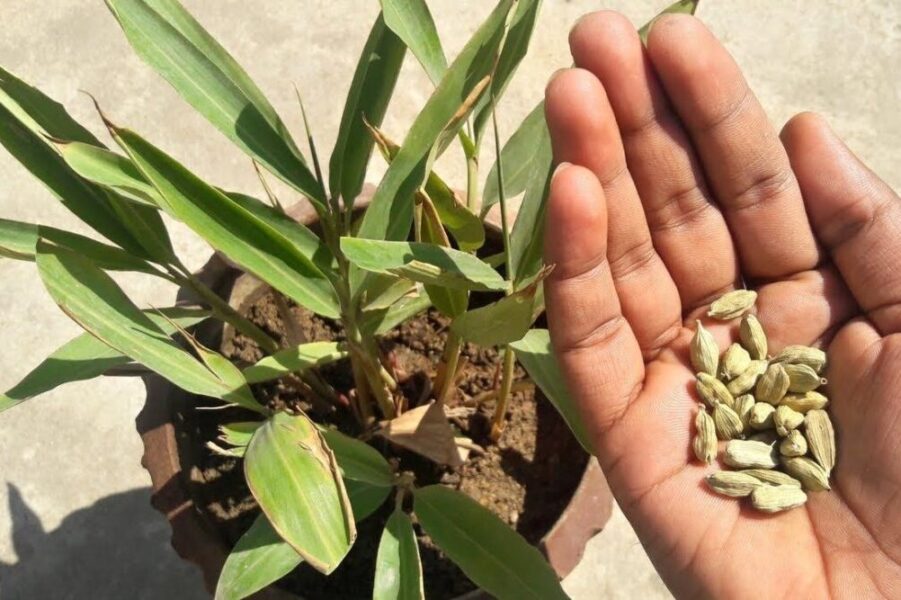General Information
- Category- Fruit, spice, drug
- Binomial Name- Cinnamomum verum
- Common Names- Ceylon Cinnamon, Dalchini
- Spread- 24-30 inches
- Height- 48-60 inches
- Average Production- NA
- Days to Maturity- 730-1095 days
Nutrition Values:
- Calories: 247
- Water: 11%
- Protein: 4 gram
- Carbohydrates: 80.6 gram
- Sugar: 2.2 gram
- Fiber: 53.1 gram
- Fat: 1.2 gram
Vitamins
- Vitamin A- 15 μg
- Vitamin C- 3.8 mg
- Vitamin E- 2.3 mg
- Vitamin K- 31.2 μg
- Vitamin B1- 0.02 mg
- Vitamin B2- 0.04 mg
- Vitamin B3- 1.33 mg
- Vitamin B6- 0.16 mg
- Vitamin B9- 6 μg
Minerals
- Potassium- 431 mg
- Calcium- 1002 mg
- Iron- 8.3 mg
- Magnesium- 60 mg
- Phosphorous- 64 mg
- Sodium- 10 mg
- Zinc- 1.8 mg
*The values are standard average per 100 grams and might change a bit.
Environmental Requirements:
- Soil- Sandy loam, rich
- Soil Moisture- 30%
- Soil pH- 4.5-5.5
- Sun Requirements- Full sun
- Best Time to Plant- Mid summer to Early fall (June-July)
Tips to Grow Cinnamon:
- Arrange good quality of cinnamon seeds or buy a cinnamon plant from nursery.
- Soil should be white silicatious sandy and well draining. It should be moist but not wet.
- Plant the seeds half an inch deep in the pot with a spacing of 1.2 inches between the seeds. With proper conditions, indoor cinnamon trees grow to reach 4 – 5 feet in height.
- We can mulch around the plants to retain its moisture. We can fertilize our plant with compost made by kitchen waste or animal waste. Once plant mature usually after three years double the doze of fertilizer.
- Pruning leaves and burying weeds is helpful for cinnamon better growth. The side branches should also be cut from the main stem to help encourage strong growth by exposing the base of the plant to sunlight.
- Once a cinnamon tree has grown for two years and reached a height of 5.0 – 6.5 feet, it can be harvested. Visual signs indicating that the plant is ready for harvest include the brown color of the bark and the hardened leaves.
- Depending on rainfall and soil fertility, cinnamon can be harvested two to three times a year.
Chemical Constituents of Cinnamon:
- A volatile oil which contains cinnamic aldehyde, euginol and terpenes.
- Also contains tannin and mucilage.
Uses:
- As a carminative.
- As a flavouring agent.
- As an astringent.
- Oil of cinnamon is a germicide.
Show Comments




